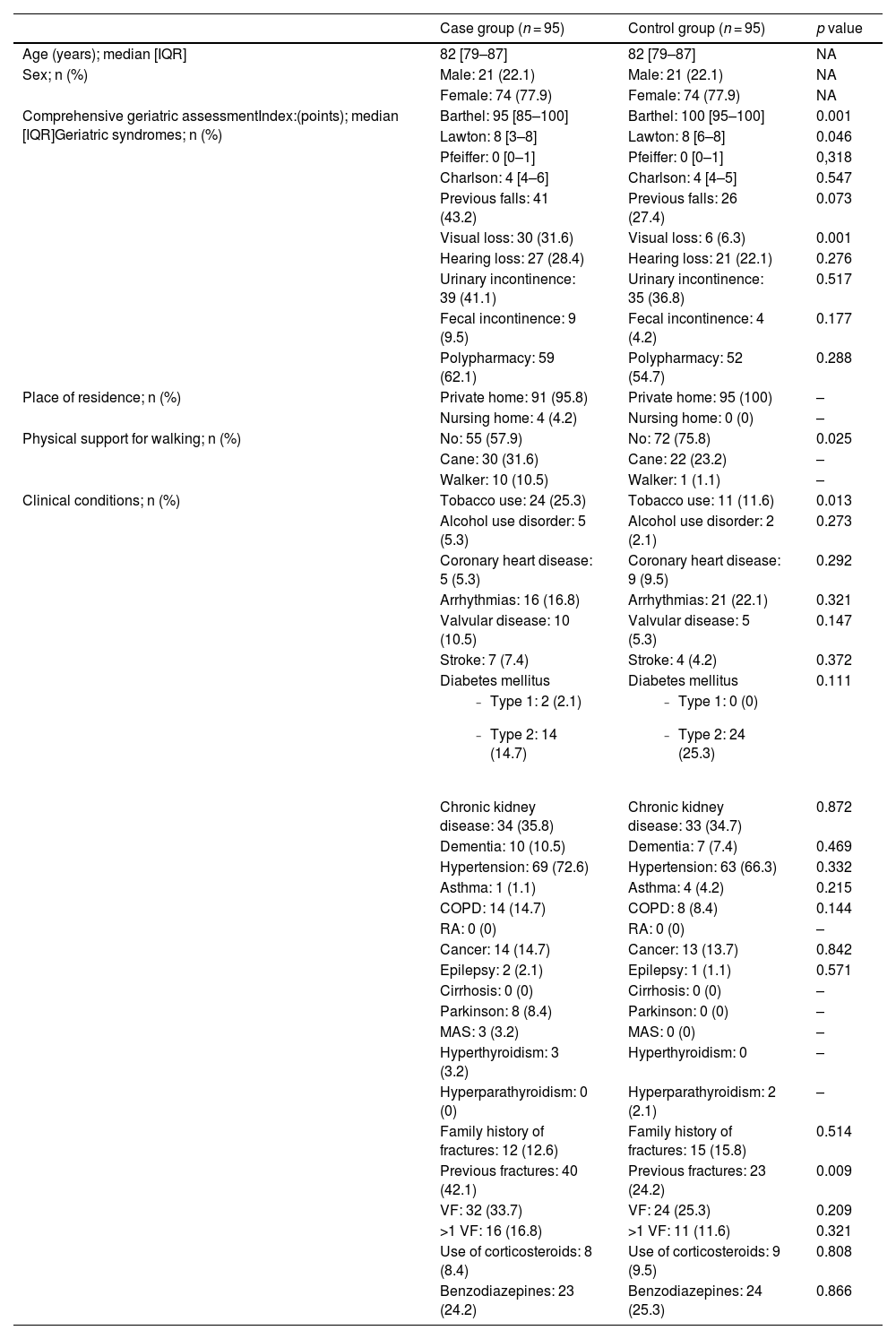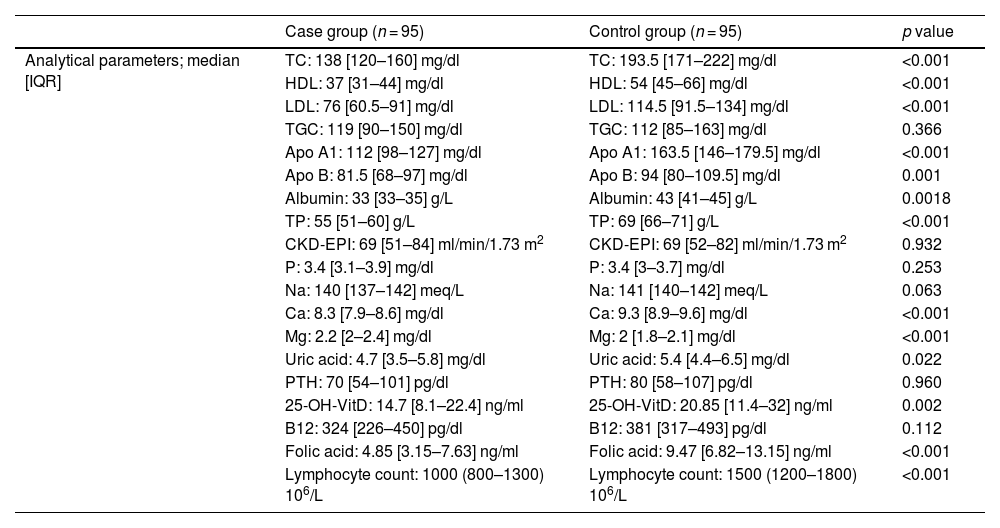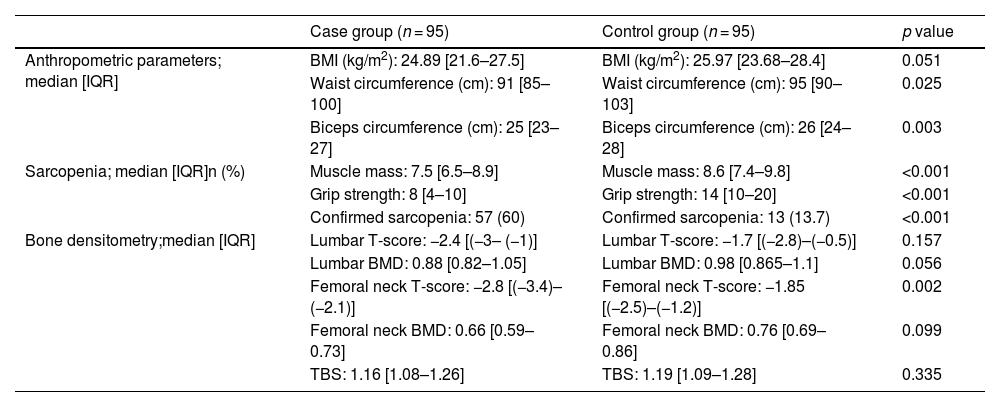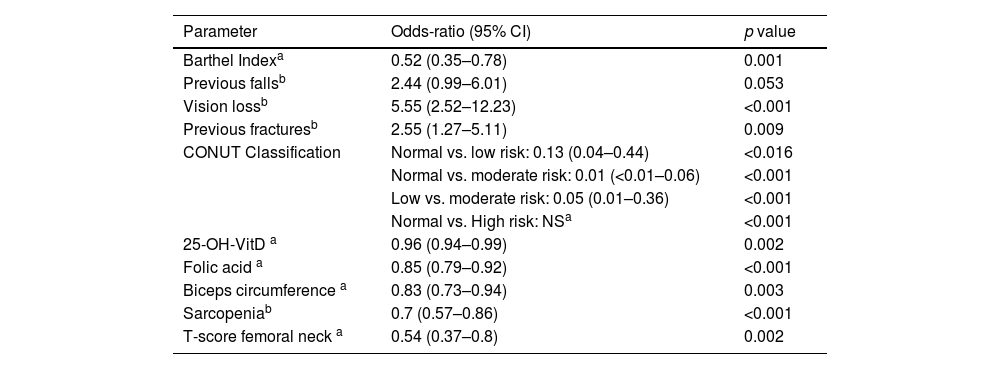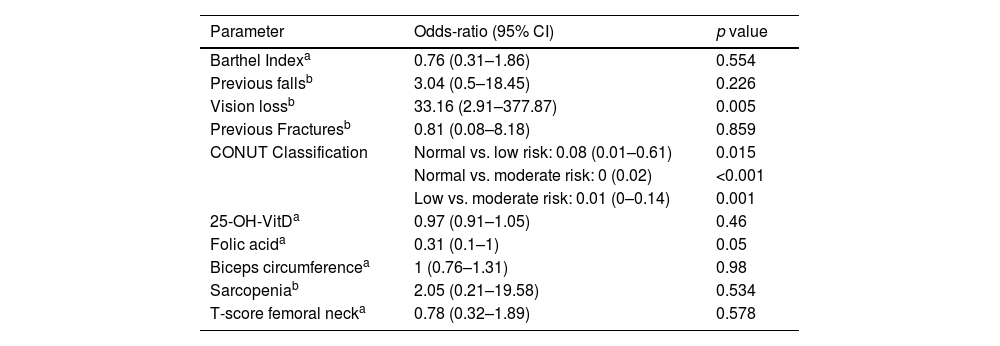This study aims to identify the risk factors associated with osteoporotic hip fractures in octogenarians and seeks to refine primary prevention strategies for these fractures.
Material and methodsWe conducted a case-control study involving individuals aged 79 years and older with hip fractures, comparing them to age- and sex-matched controls without a history of hip fractures. We collected epidemiological, clinical, anthropometric, and analytical factors. We evaluated the presence of osteoporosis using bone densitometry. We defined sarcopenia according the European Working Group on Sarcopenia in Older People criteria (EWGSOP2).
ResultsNinety-five patients per group were analyzed, with a mean age of 82 years, of which 74% were women. The multivariate analysis included statistically significant factors found in the univariate analysis (p < 0.05). These factors included the Barthel Index, nutritional assessment using the CONUT tool, folic acid, vitamin D deficiency, presence of previous fractures, loss of visual acuity, bicipital circumference, sarcopenia, and osteoporosis (densitometry in the neck of the femur). The Nutritional state (OR: 0.08 [0.01–0.61]), the folic acid levels (OR 0.32 [0.1–1]), and a loss of visual acuity (OR 33.16 [2.91–377.87]) were the independent risk factors associated with hip fracture.
ConclusionsThe assessment of nutritional status in elderly patients, coupled with a comprehensive geriatric assessment, represents easily reproducible and cost-effective tools. These tools can effectively aid in identifying individuals at risk of hip fractures, thereby contributing to more targeted and efficient preventive measures.
Este estudio tiene como objetivo identificar los factores de riesgo asociados con las fracturas de cadera osteoporóticas en octogenarios y busca perfeccionar las estrategias de prevención primaria para estas fracturas.
Material y métodosRealizamos un estudio de casos y controles en el que participaron personas de 79 años o más con fracturas de cadera, comparándolas con controles de la misma edad y sexo sin antecedentes de fracturas de cadera. Se recogieron factores epidemiológicos, clínicos, antropométricos y analíticos. Se evaluó la presencia de osteoporosis mediante densitometría ósea. Definimos la sarcopenia según los criterios del Grupo de Trabajo Europeo sobre Sarcopenia en Personas Mayores (EWGSOP2).
ResultadosSe analizaron 95 pacientes por grupo, con una edad media de 82 años, de los cuales el 74% eran mujeres. El análisis multivariado incluyó factores estadísticamente significativos encontrados en el análisis univariado (p < 0,05). Estos factores incluyeron el índice de Barthel, la evaluación nutricional mediante la herramienta CONUT, el ácido fólico, la deficiencia de vitamina D, la presencia de fracturas previas, la pérdida de agudeza visual, la circunferencia bicipital, la sarcopenia y la osteoporosis (densitometría en el cuello del fémur). El estado nutricional (OR: 0,08 [0,01-0,61]), los niveles de ácido fólico (OR 0,32 [0,1-1]) y la pérdida de agudeza visual (OR 33,16 [2,91-377,87]) fueron los factores de riesgo independientes asociados con fractura de cadera.
ConclusionesLa evaluación del estado nutricional en pacientes de edad avanzada, junto con una evaluación geriátrica integral, representan herramientas fácilmente reproducibles y rentables. Estas herramientas pueden ayudar eficazmente a identificar a las personas con riesgo de sufrir fracturas de cadera, contribuyendo así a medidas preventivas más específicas y eficientes.
Article
Diríjase desde aquí a la web de la >>>FESEMI<<< e inicie sesión mediante el formulario que se encuentra en la barra superior, pulsando sobre el candado.

Una vez autentificado, en la misma web de FESEMI, en el menú superior, elija la opción deseada.

>>>FESEMI<<<



